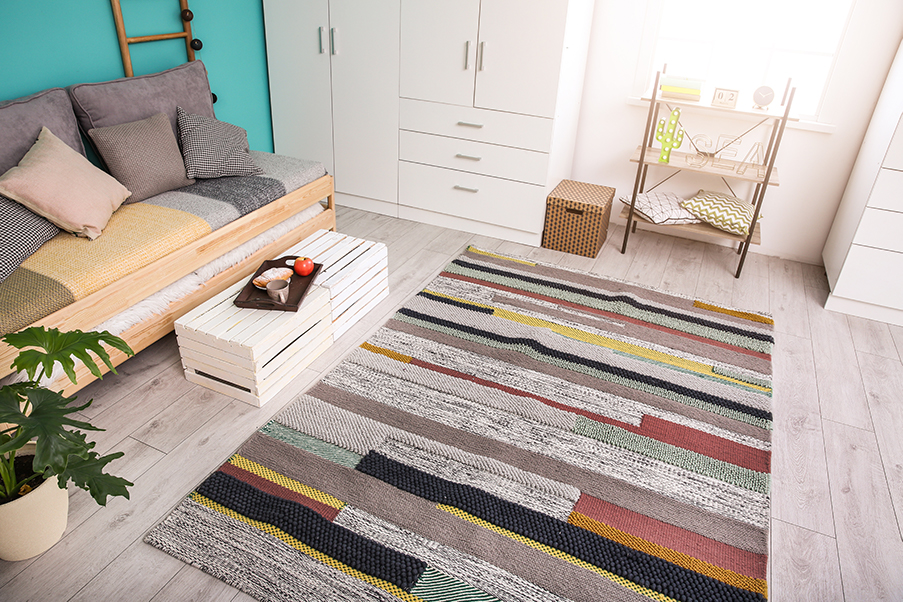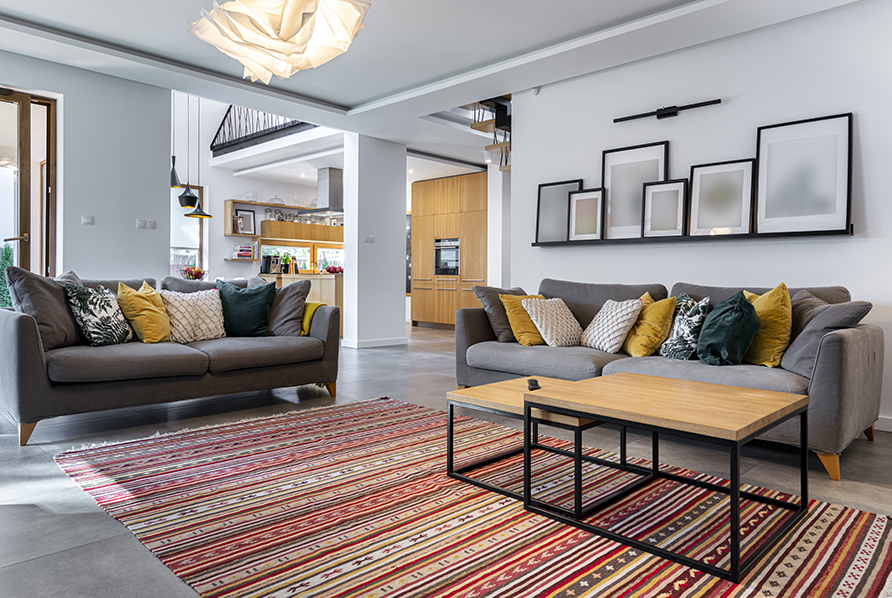Uncategorized
What Are the Three Main Area Rug Designs?
There are a lot of decisions when it comes to redesigning our homes. Most people start with their color palette and style, and go from there. When it comes to your area rugs there are three main rug designs; contemporary, traditional, and transitional. But what are the differences between the three? And how can you choose which one to put in your home? Read further to learn more about these area rug designs and how they can help accentuate your home decor.
Contemporary Rug Designs

Contemporary linear designs started years ago with Frank Lloyd Wright. His design and architecture was the start of a new industry. Since then, the evolution of contemporary designs are:
- Contemporary has many forms and colors.
- There are numerous custom colors and modified designs.
- Some designs are inspired by nature that includes clouds, stars and animals.
- Other designs are more man-inspired such as paint splatter, florals and geometric elements.
- Rug designs run both vertically and horizontally, however, typically designs run vertically or up the length of the rug.
- Fewer colors are used, but are more wisely chosen that harmonize well together.
- Contemporary designs are becoming increasingly popular with consumers and designers.
- Open floor plans are common in new home construction which lends itself well for contemporary designs.
- Most contemporary design rugs have no borders or fringes.
- A handful of countries produce these designs and colors in several qualities and prices.
- Fibers such as wool, silk, viscose and polypyrene are used.
Transitional Rug Designs

Transitional rug designs originated about 25 years ago. What makes them different, but similar from “Contemporary” and “Traditional Design” rugs, are as follows:
- Designs are traditional, the colors are contemporary.
- Contemporary colors are referring to soft, and sometimes brighter colors.
- Traditional designs have borders and fringes.
- Creative textures, finishes and designs for both contemporary and transitional rugs are continuing to evolve. This evolution is new to the rug industry.
- Transitional rugs are purchased for both contemporary and classic architectural home styles.
- Quality and prices along with fiber content will vary as it does with contemporary rugs.
- A handful of countries produce these designs and colors in several qualities and prices.
- Fibers such as wool, silk, viscose and polypyrene are used.
Traditional Rug Designs

Traditional rug designs (hand knotted Oriental rugs) originated centuries ago in the Near, Middle and Far East. Every region, city, and tribe distinguished themselves with their own unique styles and colors. Today these designs make up approximately 40-50% of rug sales in the United States in various sizes and shapes. Features of “Traditional Designs” are:
- Normally found in period, classic and older architectural homes.
- Rug colors are more varied
- Designs more complex and interwoven
- Rugs contain borders and fringes
- Primary Design categories include:
- Florals
- Geometrical
- Prayer rugs
- Tree of Life
- Hunting designs
- Dating signatures
- Poetry
- In recent years there have been changes and modifications in designs. These are considered secondary designs or sub categories of traditional designs. Examples of these changes include:
- Erased designs
- Egyptian Mumluk designs
- Abstract designs
- The origins of these designs are primarily from Persia, India or Turkey.
- There are several qualities and prices.
- Fibers such as wool, silk, viscose and polypyrene are used.
- Production takes from several weeks up to several months to create. The time is dependent upon the fineness of the weave, complexity of the design, and number of colors used.
Not sure which one to go with? Don’t worry, Kirishian Rugs has a huge showroom with all of these designs and more!

